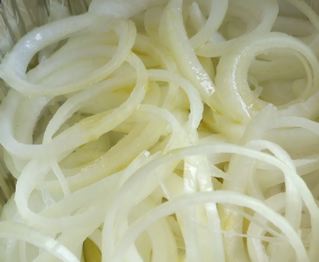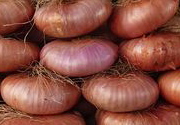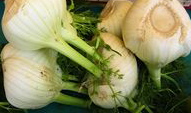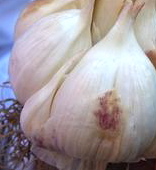
Onions are an essential ingredient of many different global cuisines. Onions can be delicious not only raw, but also, for example, caramelized, oven roasted, sauteed, or sweated.
Caramelizing onions is a process that is all about recognizing onion’s natural sugar content, natural moisture content, and understanding cooking principles of both time and also temperature.
The time needed for “caramelizing” onions or another “aromatic” vegetable exceeds the time it would take for “sweating” the same vegetable. Both are classic techniques for cooking onions and other aromats and used for flavor profile building when cooking in cultures around the world.
Besides onions, one can also caramelize shallots as well as carrots.
While one can “sweat” a number of the “aromat” categorized vegetables, a higher sugar content is required for caramelization, making onions a most desirable candidate.
Sweated vegetables, including onions, will be translucent, but not slightly browned; while caramelized vegetables such as onions will have have a golden brown hue.
Onion slices image courtesy of TACLUDA at rgbstock.com.
Oven roasted vegetables, including onions, are similarly quite yummy because the dry heat draws some excess moisture out and in turn condenses the natural flavor components of the vegetable(s) used. See a description and visual at Pinterest.
Many cultures have variations on either sweating or roasting vegetables to develop flavor profiles in dishes and meals.
 Other aromatic vegetables with specific tastes and pleasing aromas that contribute to a wonderful flavor profile, especially when combined, can be oven roasted quite successfully.
Other aromatic vegetables with specific tastes and pleasing aromas that contribute to a wonderful flavor profile, especially when combined, can be oven roasted quite successfully.
Examples can include:
- carrots
- celery
- cherry peppers & chili peppers (fresh and also dried hot chiles)
- fennel
- garlic
- ginger root
- leeks
- onions and scallions
- parsnips
- shallots
- sweet peppers (possibly fire roasted)
- certain flavor rich tomatoes (possibly fire roasted or sun-dried)
When either sweating or roasting certain vegetables, adding in complementary herbs, spices, etc. can further improve the flavor profile.
Examples can include:
- annato
- aniseed
- asafetida
- bay leaf
- cardamom
- cilantro
- cinnamon
- cloves
- cumin
- curry mix
- dried chiles
- dried grapes aka raisins
- epazote
- fenugreek
- galangal
- garam marsala blend
- lemon zest
- kaffir lime leaves
- kemeri aka candlenuts
- lemongrass
- oregano
- orange zest
- paprika
- parsley
- powdered ginger
- pumpkin seeds
- saffron
- sage
- salam leaves
- sesame seeds
- shrimp paste
- thyme
- turmeric, etc.
 Fine Cooking did a nice article back in February 1999, including a table they dubbed “aromatic flavors from around the world” highlighting some classic combinations used in various cultures across the globe, and often you will find onions in the mixtures.
Fine Cooking did a nice article back in February 1999, including a table they dubbed “aromatic flavors from around the world” highlighting some classic combinations used in various cultures across the globe, and often you will find onions in the mixtures.
Breaking down the vegetable cell walls by using heat allows you to access all the flavor components the vegetable(s) have to offer.
How To Caramelize Onions
Supplies you will need:
- wisely selected onions;
- suitable knife for slicing the onions;
- flexible cutting mat;
- non-stick coated tongs;
- large saute pan (preferably non-stick) w/ lid and burner to match pan bottom size;
- small amount spray or liquid pourable oil fat source;
Select a couple (to equal a pound of actual onion slices after the onions are skinned and ends removed) of flatter, decent size onions of one of the sweeter onion varieties mentioned in our February 9, 2013 Facebook post.
Think:
- Peru Sweet
- Certified Organic Sweet (from places such as Georgia, Mexico, Peru, New York, Texas and Utah)
- Chile Sweet
- Ecuador Sweet
- Empire Sweet
- Guatemala Sweet
- Mexico-Tampico Sweet
- Texas 1015
- Vidalia® Fresh
- Vidalia® Storage
- Utah Sweet, or else choose
- Red onions of comparable size.
Method:
1. Halve the chosen onions, remove v-shaped cut outs of the root ends, then prepare *evenly thin half moon onion slices if the onions are flat (*with round onions the slices won’t be uniform because of the ball shape of the onions). Flatter onions really will produce more uniform slices cut about 3/8-1/4 inch thick at most. (Although the stock photo we found depicts round slices, we actually prefer half-moon slices).
2. Use “non-stick” cookware that has a solid, heavy, even pan bottom surface preferably with no hot spots. Simply spray a double layer of cooking spray (canola oil) or else use no more than 1-2 Tbsp. of olive oil for a thin coating inside a large flat bottom saute pan preferably sized for a large burner. Some oil in the pan is required for this to happen, but you are NOT frying onions so keep the amount of fat down. There should not be a need to exceed 2 Tbsp which is really a significant amount of fat. Because you are using moderate to lower heat, you can use extra virgin olive oil quite successfully.
Heat the oil sprayed pan on medium heat so that it is ready for the separated onion slices to be added to it. Once the onion slices are added all at once to the pan the temperature will drop. Toss to coat with the small amount of oil. At 212 degrees F the water content of the onions boils off creating steam, so be careful not to allow steam to reach your hands, arm or face as you stir the onion slices around in the pan to expose them to the fat and have them take their turn on the bottom of the pan. It is easy to use non-stick coated tips tongs to accomplish this.
Since the onions need contact with the pan’s even bottom surface, don’t overcrowd the pan. The volume will drop down dramatically as most of the water content is lost and the slices become limp, so a double layer to start with is as much as you should add to any pan. In the end, the final caramelized onions volume will depend in part upon how long the onions have been in storage and their current water content, but the volume might be no more than 1/3 or even 1/4 of the raw amount of onions you started with.
3. The onions will need to be cooked starting on no higher than medium heat, then dropped down to medium low heat. Once the water is starting to evaporate off, the pan should be covered and allowed to sit on the heat giving the onion slices prolonged contact with the pan surface. Use tongs to move them around so that all surfaces of the onions have some contact time with the pan surface. (Higher temperatures such as used for stir-frying other vegetables are not the goal here as you want sweeter taste perception so low and slow cooking is preferable for caramelization of onions).
4. It is when the bottom of the covered pan reaches 310 degrees F and most of the water has been evaporated out of the onions that suddenly they start to quickly brown. Turn the temperature down to low heat. Golden hue color develops rapidly for all the onion pieces once it begins so keep stirring the onions until all of them have reached the desired golden brown hue and are completely limp. Turn off the heat.
5. Remove the pan from the cooktop and have an appropriate room temperature plate or bowl on a hot mat ready to transfer the caramelized onions to the moment they are done as they cannot be kept cooking in the pan (even when it is off the burner the bottom will still be hot and cooking the pans contents) or else the onions will burn.
Keep in mind that your goal is to sweat the onions out, then have the sugar content condense and then have the onions become lightly caramelized.
It does not take that much fat nor the addition of additional sugars per se if the sugar content of the onions is high enough, which is why you want to be using a sweeter onion variety in this instance. Using this method the onions will be flavor rich because the flavor has condensed, but they will not taste overly sweet which can happen with methods that have you adding additional sugar. The excess water content must evaporate off before the caramelization of the sugar content of the onion slices can occur.
Expect this cooking process to take typically at least 25-30 minutes (possibly more with electric cooktop) because you are using lower heat to evenly remove the moisture content of the onions and maintain the sweet perception of the onions. Gas cooks faster to start with and can also lead to burning of foods at a more rapid rate.
Avoid recipes that have you adding baking soda, salt, or a lot of added sugar–all of that is simply unnecessary. You want to perceive the complex flavor of the amazing barely caramelized onions when all is said and done.
How to Use Caramelized Onions
We use caramelized onions for recipes such as part of the toppings for Make It Now At Home Pizza, or in various cooktop prepared protein, vegetable, and starch mixtures done with a balsamic reduction that we do. You will find recipes that call for using caramelized onions in or to top soups, dips, and more as well. Some dishes calling for sun-dried tomatoes will often benefit from adding caramelized onions to them.
Caramelized onions are also delicious when making microwave baked potatoes topped with cooked broccoli florets and shredded reduced fat cheese (the potato portion has a fat-free sour cream & sauteed garlic addition that makes it quite yummy). The list goes on and on for their potential uses.
We usually prep enough of something like caramelized onions, or sauteed garlic slices, etc. to enable us to make several other dishes for meals over the course of a couple of succeeding days.



1 Really Sweet Page Ya Have Here! Very Informative Subject For A Blog. Keep Up The Super Great Work!!!